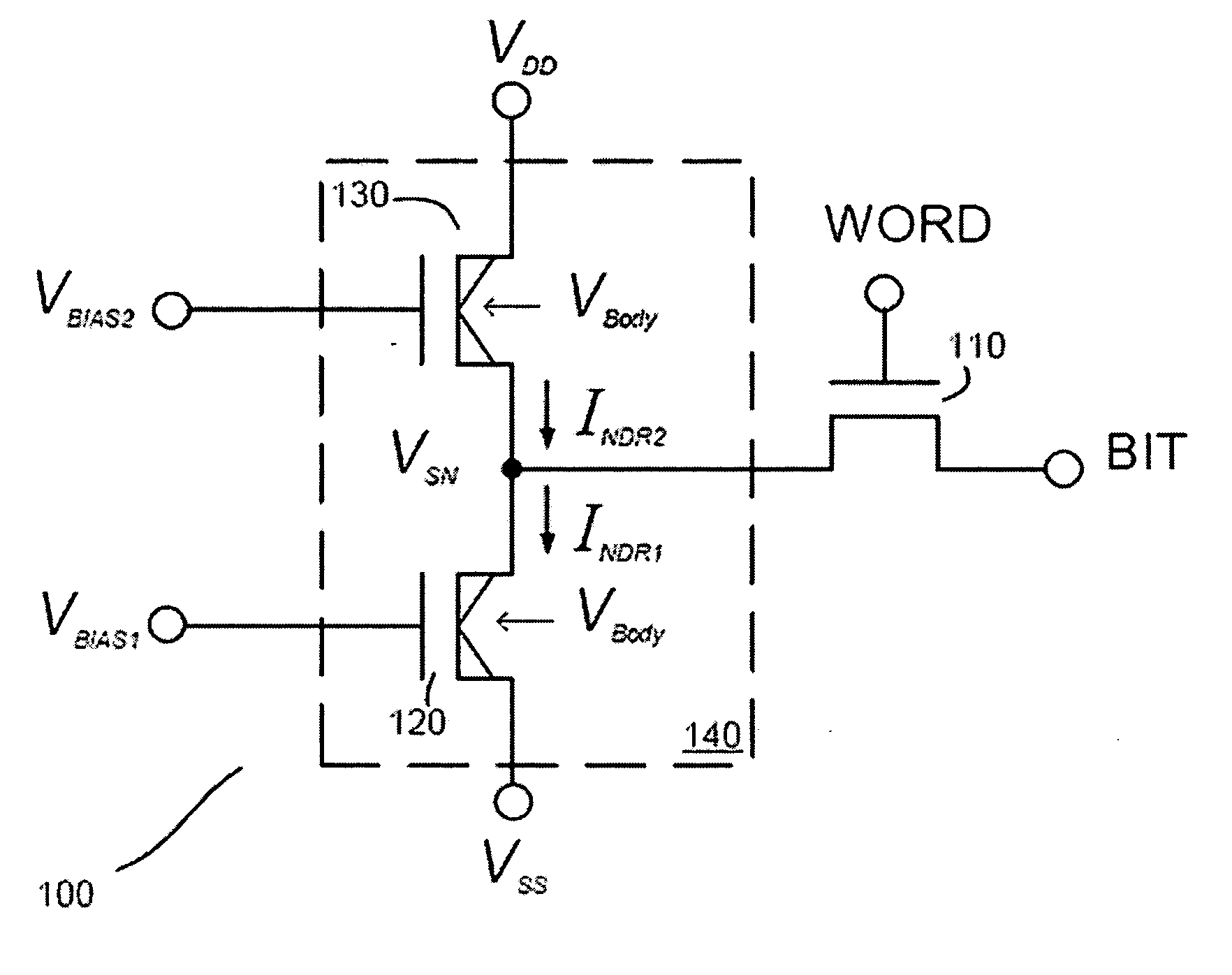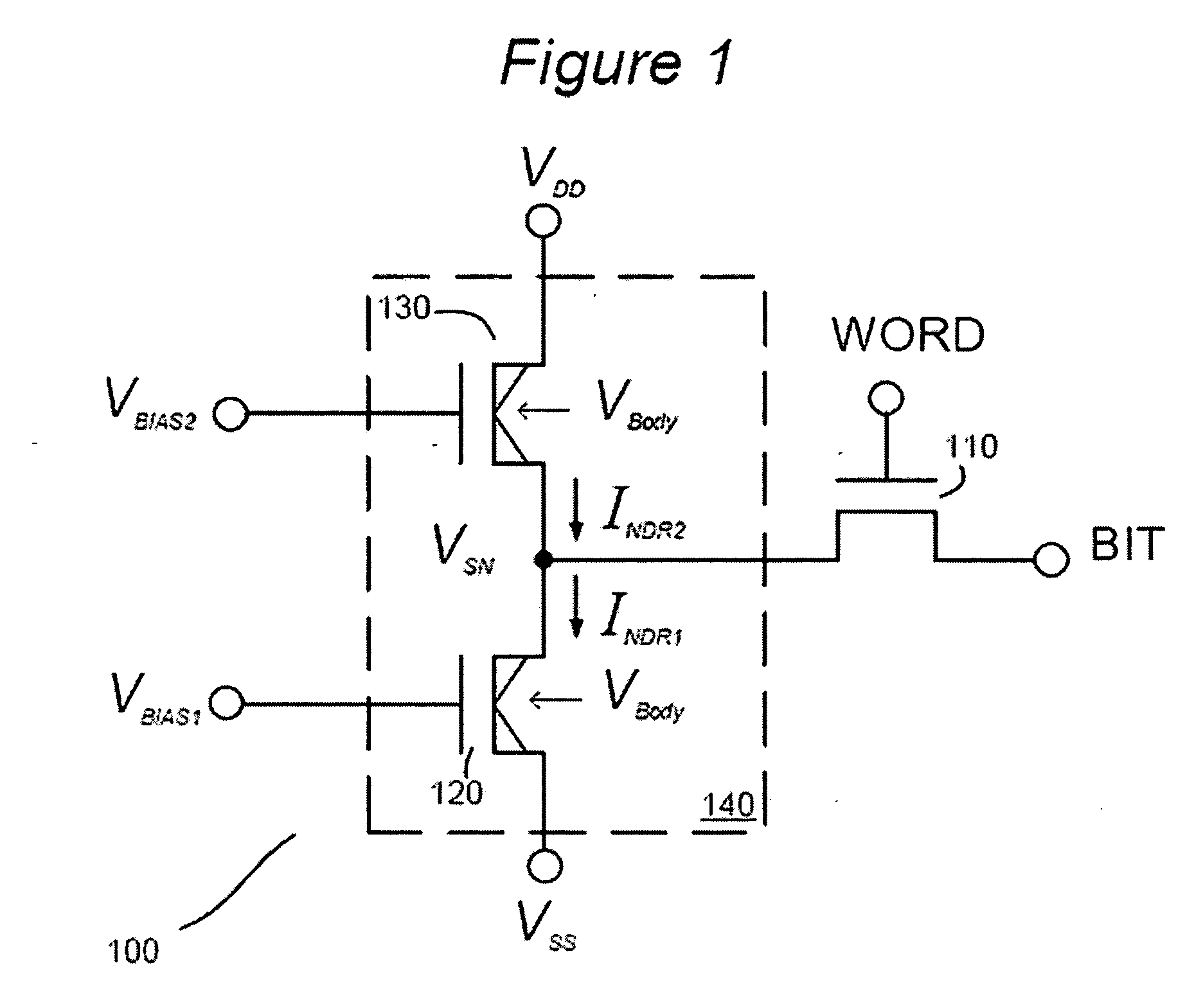Variable voltage supply bias and methods for negative differential resistance (NDR) based memory device
a memory device and voltage supply technology, applied in the direction of information storage, static storage, digital storage, etc., can solve the problem of limiting the feasibility of certain embodiments, and achieve the effect of improving the characteristics of the memory devi
- Summary
- Abstract
- Description
- Claims
- Application Information
AI Technical Summary
Benefits of technology
Problems solved by technology
Method used
Image
Examples
Embodiment Construction
[0029] Various embodiments of the invention are now described.
[0030] As noted earlier, FIG. 1 is a circuit diagram of a preferred embodiment of a static memory (SRAM) cell 100 consisting of two NDR elements 120 and 130 that form a bistable latch 140 and one enhancement-mode IGFET access element 110. While a three (3) element implementation is shown in FIG. 1, the invention is by no means limited to such embodiments, as other designs employing NDR elements can also benefit from the present teachings. Within cell 100 NDR element 120 can be considered a pull-down element, or a driver element, while NDR element 130 can be considered as a pull-up element, or a load element as those terms are understood in this field of art.
[0031]FIG. 2 is a current-vs.-voltage plot illustrating the general operational characteristics of the static memory cell 100 of FIG. 1, including in a storage mode of operation. Again, it will be understood by those skilled in the art that this Figure is merely inte...
PUM
 Login to View More
Login to View More Abstract
Description
Claims
Application Information
 Login to View More
Login to View More - R&D
- Intellectual Property
- Life Sciences
- Materials
- Tech Scout
- Unparalleled Data Quality
- Higher Quality Content
- 60% Fewer Hallucinations
Browse by: Latest US Patents, China's latest patents, Technical Efficacy Thesaurus, Application Domain, Technology Topic, Popular Technical Reports.
© 2025 PatSnap. All rights reserved.Legal|Privacy policy|Modern Slavery Act Transparency Statement|Sitemap|About US| Contact US: help@patsnap.com



